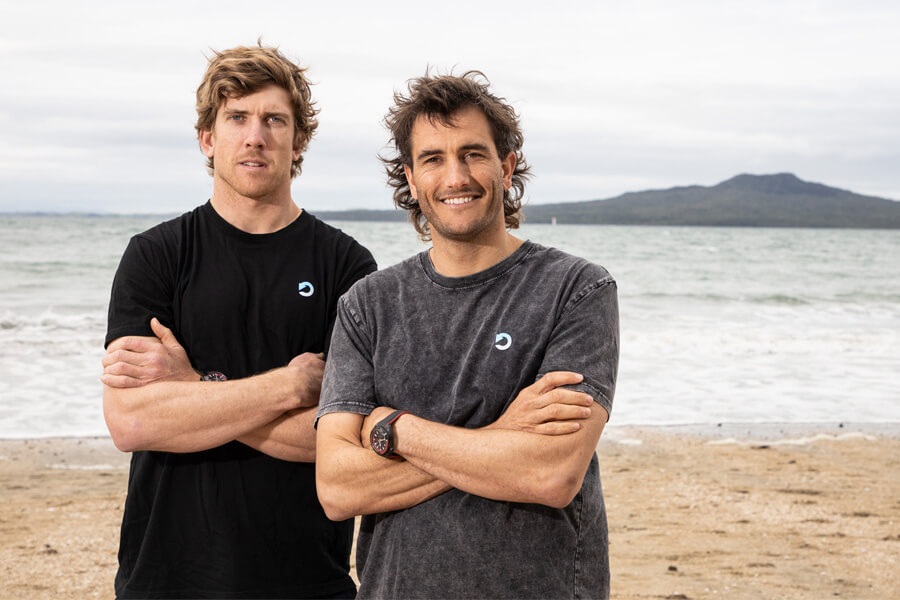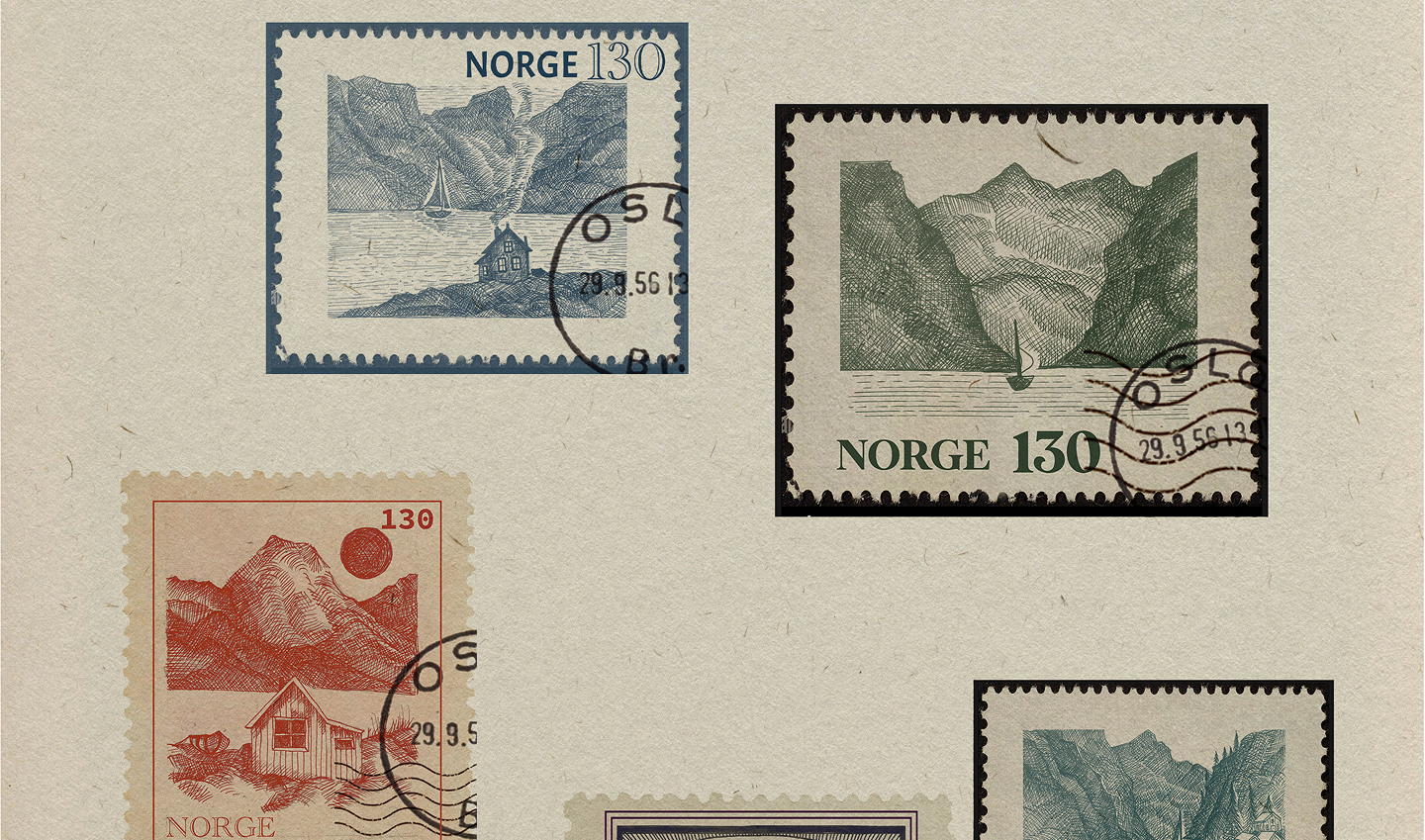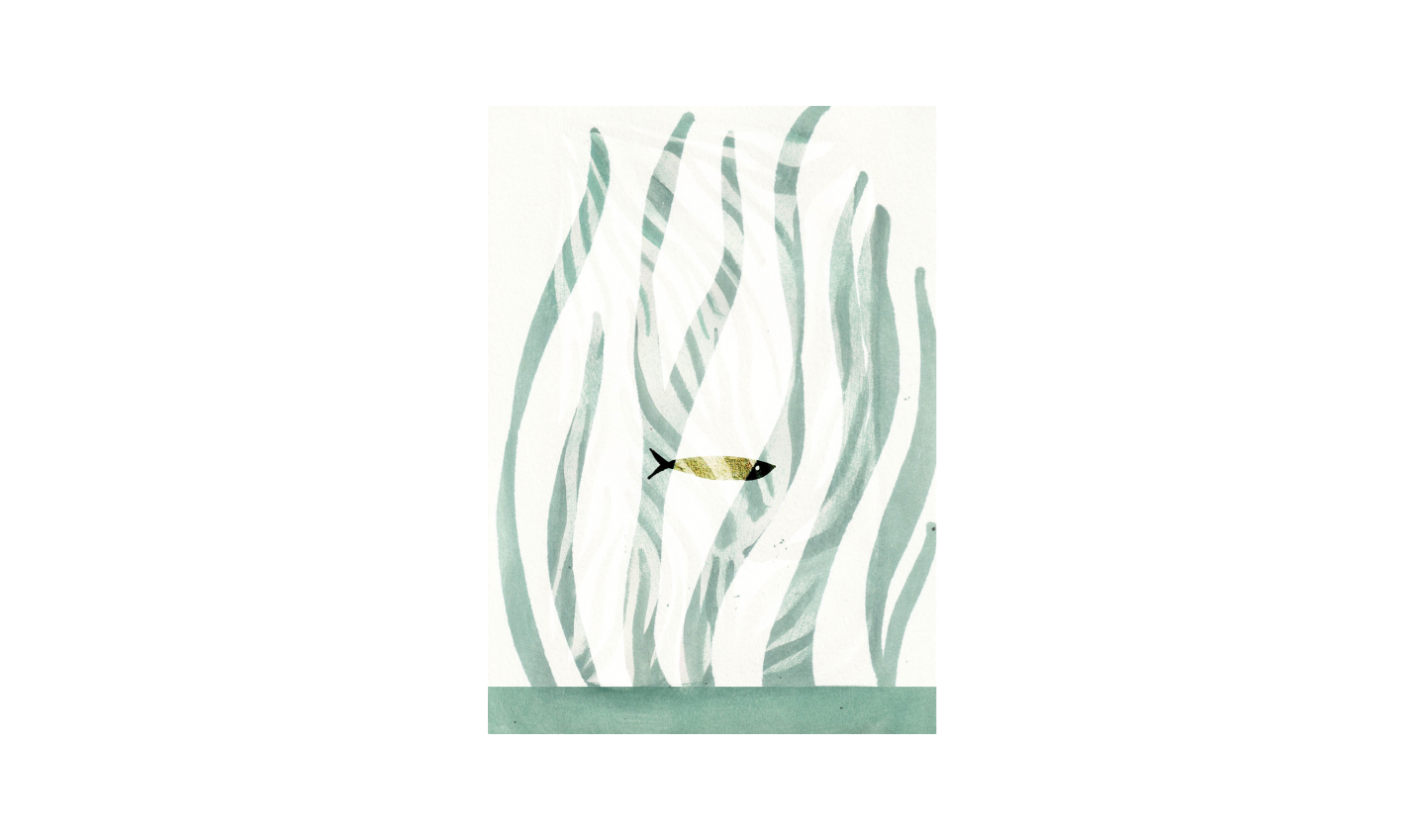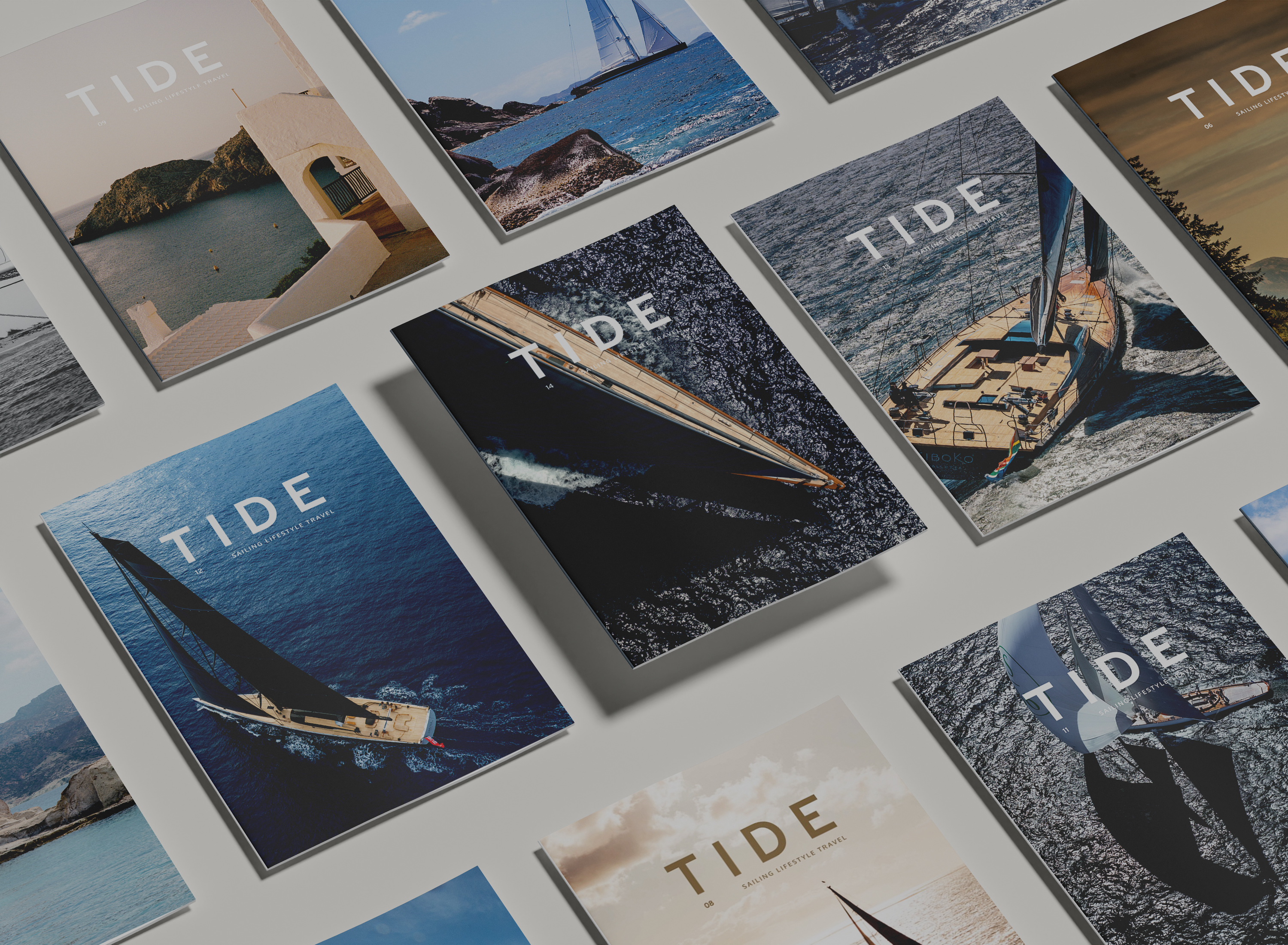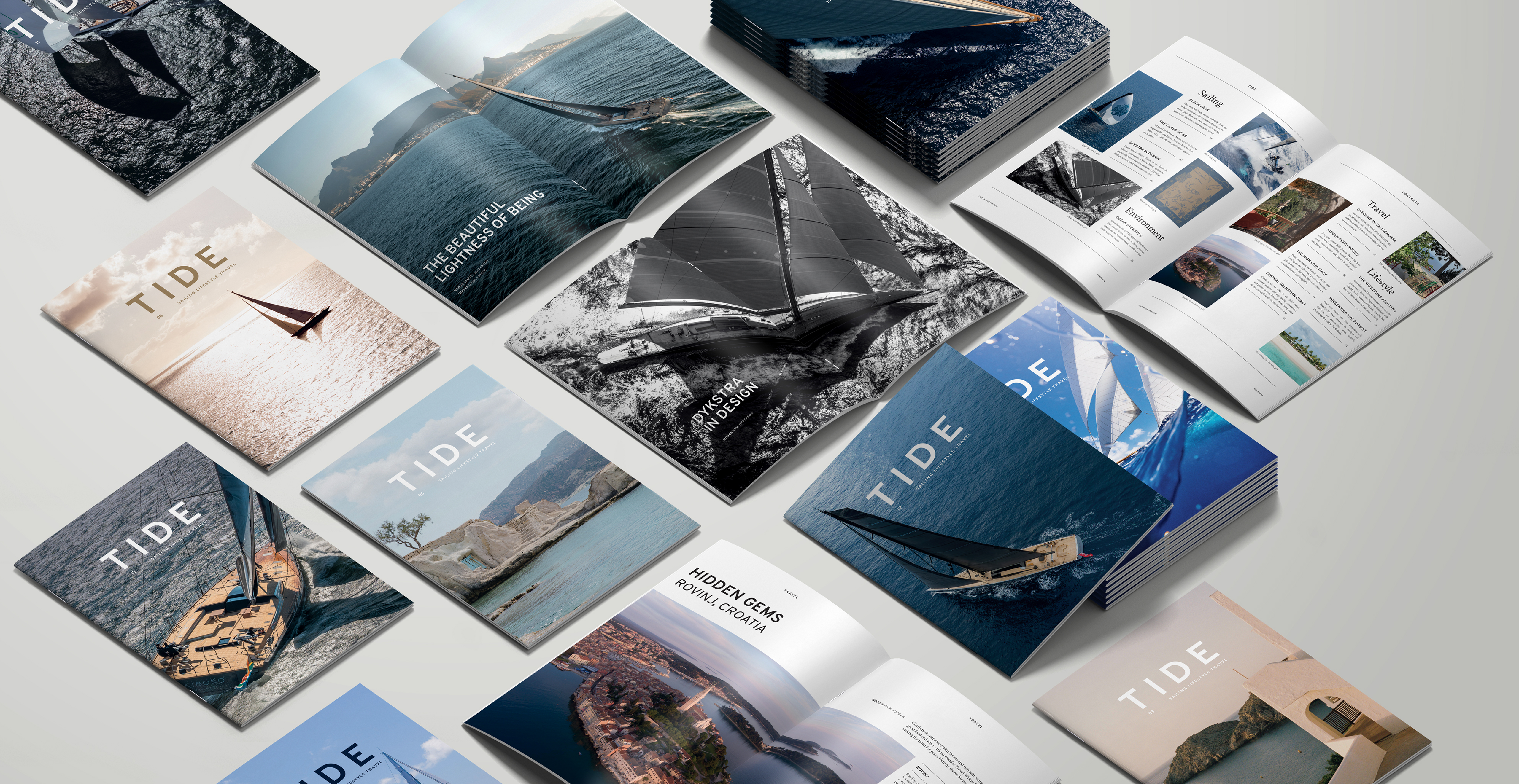Olympic gold sailing medallists Blair Tuke and Peter Burling on the preservation and restoration of the world’s oceans…
Even if you don’t sail, you probably know the legend of New Zealand’s Peter Burling and Blair Tuke. The pair crewed their AC75 to victory at the 2021 America’s Cup. In February of this year they announced the NZ team to compete in SailGP Season 2, of which they’re co-CEOs. But long before either achievement, their legacy endured.
Between 2013 and 2020, the pair won six 49er class World Championships and all 28 of the major regattas between the London 2012 and Rio 2016 Olympic Games. A four-year blitzkrieg. At the 2016 Olympics in Rio, they co-captained the New Zealand team, punctuating the honour by winning the 49er class with two races to spare. It was the biggest margin since the modern scoring system was introduced in 1968. Four years earlier in London, and as the youngest team in the field, Tuke and Burling took silver.
Tuke, thirty-one and handsome, was trimmer/helmsman for Mapfre, which came second in the 2017-18 Volvo Ocean Race. Burling, twenty-nine and equally dashing, won the International Sailing Federation’s Male World Sailor of the Year in 2017 and, in 2020, was awarded the Magnus Olsson prize for “an indelible contribution to the world of sailing”. Bona fide established, you could say.
When the pair aren’t sailing they freedive and surf. Tuke escapes to the relative isolation of Kerikeri, 200 clicks north of Auckland. The ocean is the landscape of their lives and they feel a responsibility to do something; to leverage their profiles and agitate for preservation and restoration. Hence, in 2019, they founded the conservation charity Live Ocean (pronounced Live, like jive) with a vision for New Zealand to be the world leader in ocean health.
Burling says it was when he competed in the 2017-18 Volvo Ocean Race that the interconnectedness of the world became starkly apparent. “Suddenly, you get this sense that the ocean isn’t as big as we think,” he says. “When people travel from one continent to another, they jump on a plane, go to sleep, wake up and the climate and culture are completely different. It’s almost like you’re on another planet. But when you’re on the ocean the change is gradual. You’re aware that it feels a lot smaller than you perhaps thought it was and realise that we really need to look after it.”
“The ocean contributes so much more than people give credit for,” he adds. “The more you dig into the science, the more you realise how much the ocean has a key role to play. And we’re in a position to shed light on that. If we don’t give back, if we don’t do it, who will?”
Both men have spent more than twenty years of their three decades alive in and around the ocean. They feel a special connection to the big blue and are acutely aware that environmental numbers don’t stop at a nation’s borders.
“You see how the ocean connects countries and continents and what it does for us as a planet, what it does for the weather and the climate,” says Tuke, whose epiphany came while sailing his Volvo.
Tuke sees the change, feels it even, but says the challenge lies in convincing others of its inexorable decay. “It’s hard to connect people because the ocean of five or ten years ago may not seem that different to today. But if you go back fifty or a hundred years, there’s a huge difference in the whole ecosystem, the amount of marine life in the water, how clear the water was when there was less sedimentation coming off the land and, obviously, pollution. It’s changed massively in that space of time. And it’s changed in my lifetime. But trying to see those changes from year to year is difficult, and that’s our job; to connect people to those changes.”
For Burling, it was during the 2016 Olympic Games in Rio when he first witnessed some of the most gorgeous landscapes close to ruin below the waterline. “You’d come in from racing and wash yourself down so you wouldn’t get sick from the sewage leaking into the bay. It’s pretty hard not to notice when some of the most picturesque places in the world are being destroyed by human pollution.”
His epiphany may have arrived in Brazil, but sadly, Burling doesn’t have to go far from home to see degradation. New Zealand protects 0.4 per cent of its ocean; the global call is for 30 per cent.
“You look and you listen to what the ocean used to be like around the upper harbour of Auckland, how many crayfish there were, how abundant the ecosystem was, and look at it now. Visibility below the surface is less than a metre, and if you do find something it’s more of a pest than anything.”
Burling has a strong sense of how much the ocean is a life support system for our planet – “How much oxygen it provides, how much heat it absorbs, how much food it gives.”
It’s easy to see how the pair felt spurred on to establish Live Ocean. But it’s not your typical charity. Every cent of public donation goes directly into whatever cause they’re working on. Two recent projects are the continuing protection of the vulnerable Southern Right Whale, and helping to save the Antipodean Albatross, a bird whose population has declined by seventy per cent since 2006, and which, according to Burling, southern-hemi sailors feel a special connection with.
“Those birds are such incredible navigators, so far advanced in an evolutionary sense. When you sail through the Southern Ocean you see how harsh it is and how much support we as humans need to make it through, and they just make it look effortless. No one knows quite how they do it,” he says.
Ninety percent of New Zealand’s sea birds are at risk of extinction, mostly due to being accidentally caught by fishing trawlers. But Burling isn’t going in on the fishing industry with a pitchfork. He talks, he smiles, he convinces.
“It’s a great opportunity to talk to the fishing industry about by-catch,” he says. “Because it’s a pain in the arse for them and we really wanted to shed light on the fact that we don’t need to catch birds to catch fish. Now, with the climate changing, birds are overlapping a lot more with fishing fleets and we want to connect people to fish smarter with no sea bird bycatch.”
The Southern Right Whale is another sentinel species for climate change. “It was almost wiped out during the whaling era, at one point dropping down in population to around eighty whales,” says Burling. “Thankfully, it has bounced back well. Each whale is estimated to absorb around 33 tonnes of carbon and plays a huge role in phytoplankton regeneration, bringing nutrients from deep water to the shallows. Then you look at the North Atlantic and the Northern Right Whale (effectively the same species) and they’re in serious risk of extinction. It’s heart-breaking.”
Tuke feels great satisfaction from using Live Ocean to put the plight of the Antipodean Albatross on the public radar. Even the superyacht and racing industries are feeling the environmental push. “People hardly knew about these numbers a year ago,” he says, “but momentum has started to grow. People in those industries are trying to find ways to reduce their carbon footprints and do things in a more environmentally friendly way. That goes from the build right to when they’re on the water. It’s happening…”
Pause.
“But it needs to happen faster. When Pete and I came into this, we were really at a tipping point for the ocean. Things need to happen at a faster rate and in a positive direction.”
Despite everything, Tuke and Burling are optimistic about the future. “We wouldn’t have started a marine conservation charity if we weren’t,” says Tuke. But they feel the pressure of the short timespan they’re forced to operate in. They advocate for the big decisions that need to be made.
“Ocean or not, we’re connected to it and things need to start changing,” says Tuke. “The ocean is resilient. If we leave big parts of it alone and give it a chance to breathe it will bounce back and we’ll have a healthy ocean.”
They describe a future, five years from now, where thirty per cent of the ocean is protected. But to get there, humanity has to use the planet better. Offset carbon more efficiently. Preserve the oceans faster. If we don’t, Tuke believes the five-year scenario is almost too grim to contemplate.
“The planet’s life support system stops working,” he says. “If we haven’t done those things, if we haven’t protected parts of it, and don’t give it a chance to bounce back, if we keep taking without thinking there’s an end… It’s not something you want to think too much about.”
(You can support Live Ocean by following their socials and subscribing to their free newsletter. “And,” says Burling, “we’re always looking for financial support. The more funds we can bring in, the more projects we can get behind. One hundred per cent of public donations go straight to our causes.”)


